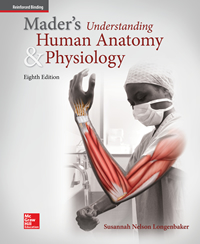1 A) buffy coat. B) differential count. C) hematocrit. D) complete blood count. 2 A) 45%. B) 55%. C) 30%. D) 40%. 3 A) blood clotting. B) removes dead cells. C) removes pathogens. D) regulates pH. 4 A) plasma B) tissue fluid C) lymph D) cytoplasm 5 A) Albumins, globulins and glycogen. B) Albumins, fibrinogen and globulins. C) Erythrocytes, fibrinogen and globulins. D) Erythrocytes, globulins and plasma 6 A) carry oxygen B) maintain pH C) maintain osmotic pressure D) coagulation of blood 7 A) formed elements B) hemoglobin C) plasma proteins D) water 8 A) bone marrow B) kidney C) liver D) thyroid gland 9 A) Albumins, globulins and fibrinogen. B) Albumins, globulin and glycogen. C) Erythrocytes, leukocytes and platelets. D) Neutrophils, basophils and eosinophils. 10 A) plasma proteins B) red blood cells only C) white blood cells only D) red blood cells, white blood cells and platelets 11 A) kidneys B) liver C) spleen D) red bone marrow 12 A) erythrocytes B) hemocytes C) monocytes D) platelets 13 A) fibrinogen. B) hemoglobin. C) globulin. D) lipoprotein. 14 A) 6,000/cubic mm B) 200,000/cubic mm C) 5 million/cubic mm D) 20 million/cubic mm 15 A) albumin B) fibrinogen C) hemoglobin D) plasma 16 A) red blood cell B) white blood cell C) platelet 17 A) Transportation of oxygen gas. B) Bilobed nucleus. C) Smaller than white blood cell. D) Contain hemoglobin. 18 A) about 10 days. B) about 60 days. C) about 120 days. D) several years. 19 A) Binds and transports oxygen. B) Stimulates the production of red blood cells. C) Stimulates the destruction of red blood cells. D) Stimulates the formation of a clot. 20 A) bone marrow B) kidneys C) skeletal muscles D) spleen 21 A) an infection B) damaged blood vessels C) low oxygen levels D) high oxygen levels 22 A) Bone marrow and kidneys. B) Bone marrow and spleen C) Kidneys and spleen D) Liver and spleen 23 A) blood pressure B) number of formed elements C) number of red blood cells D) number of white blood cells 24 A) hemolytic anemia B) polycythemia C) pernicious anemia D) aplastic anemia 25 A) larger and lack a nucleus. B) larger and have a nucleus. C) smaller and lack a nucleus. D) smaller and have a nucleus. 26 A) Albumin B) Erythrocytes C) Leukocytes D) Platelets 27 A) 6,000/cubic mm B) 200,000/cubic mm C) 5 million/cubic mm D) 20 million/cubic mm 28 A) neutrophils B) eosinophils C) basophils D) lymphocytes 29 A) Basophils B) Eosinophils C) Monocytes D) Neutrophils. 30 A) monocytes B) lymphocytes C) eosinophils D) neutrophils 31 A) basophil B) neutrophil C) monocyte D) eosinophil 32 A) basophil B) neutrophil C) monocyte D) lymphocyte 33 A) neutrophil B) eosinophil C) lymphocyte D) monocyte 34 A) erythrocytes B) lymphocytes C) monocytes D) neutrophils 35 A) leukocytosis. B) polycythemia. C) anemia. D) leukemia. 36 A) basophils B) lymphocytes C) monocytes D) platelets 37 A) basophils B) erythrocytes C) neutrophils D) platelets 38 A) platelet plug formation, vascular spasms, coagulation B) vascular spasms, coagulation, platelet plug formation C) coagulation, platelet plug formation, vascular spasms D) vascular spasms, platelet plug formation, coagulation 39 A) thrombin B) prothrombin C) vitamin K D) fibrin activator 40 A) fibrin B) prothrombin activator C) vitamin K D) fibrinogen 41 A) potassium B) sodium C) barium D) calcium 42 A) B12 B) D C) E D) K 43 A) lymph B) serum C) tissue fluid D) interstitial fluid 44 A) bone marrow B) kidneys C) liver D) platelets 45 A) 1-2-3-4 B) 2-3-4-1 C) 3-2-1-4 D) 3-1-4-2 46 A) coagulation B) hemorrhage C) thrombocytopenia D) hemostasis 47 A) a deficiency of platelets. B) a deficiency of clotting factors. C) an excessive numbers of platelets. D) none of the above. 48 A) thrombus. B) embolus. C) prothrmbin activator. D) edema. 49 A) hemostasis. B) coagulation. C) agglutination. D) transfusion. 50 A) A antigens B) B antigens C) A and B antigens D) Neither A nor B antigens 51 A) anti-A and anti-B B) anti-A, anti-B, and anti-Rh C) anti-Rh D) no anti-A, anti-B, or anti-Rh 52 A) type AB B) type A C) type B D) type O 53 A) Type B. B) Type AB. C) Type O. D) none of the above. 54 A) Type AB. B) Type O. C) Type A. D) All of the above. 55 A) Type AB. B) Type O. C) Type B. D) all of the above. 56 A) AB+ B) AB- C) O+ D) O- 57 A) A+ B) A- C) B+ D) B- 58 A) O; AB B) AB: O C) Rh+; Rh- D) Rh-; Rh+





